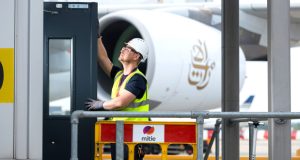Workplace transformation projects don’t always deliver the expected results. Angela Love, a director at Active explains why workplace design can’t be left to designers
Almost twenty-five years ago Paul Krugman, the famed economist and columnist for the New York Times, commented: “Productivity isn’t everything, but in the long run it is almost everything. A country’s ability to improve its standard of living over time depends almost entirely on its ability to raise its output per worker.”
The British Council of Offices (BCO) currently estimates that two-thirds of the UK’s workers are office-based. Additional research suggests that we’ve barely achieved a two per cent increase in productivity over the last decade. As we’re all too aware, current UK productivity leaves a lot to be desired, and action needs to be taken at both micro and macro levels to create the much-needed boost. It’s not surprising, then, that a record number of organisations are looking to revitalise their workplace environments in a bid to stimulate their productivity levels.
It’s well understood that the physical workspace is a key tool in the drive to increase productivity. It’s not just about efficiency; the design of the space can make or break important dynamics such as social cohesion, trust and information sharing. It’s often assumed that an office refurbishment or relocation will automatically solve all problems and produce significant operational benefits. However, recent research from workplace effectiveness expert Leesman shows this is not the case. According to its findings, just 34 per cent of workplace transformation projects deliver high-performance results.
This should act as a warning to organisations embarking on major workplace redesign projects. With huge amounts of money being invested in such schemes, business leaders rightfully expect a significant return. The office is a crucial component of organisational performance, and improving it should, in theory, achieve the required productivity boost. But as so many have found, this is easier said than done. There are many factors to consider, and without a clear design rationale, businesses could see the reverse effect.
Design solutions should be geared to improving and supporting employee effectiveness, which means individuals’ needs must be placed at the heart of the endeavour. The design should take a user-centric approach that wraps the infrastructure around the employee. Every effort should be made to create facilities that enable individuals and teams to perform at their best. This is where facilities managers come into their own. They are the gatekeepers of the workspace. They understand the way people work, their daily needs and how they interact with the physical environment. This is why FMs need to be integral to the process of creating better workplaces, fully involved in layout, optimisation and overall design.
Regressive design
According to Leesman’s research, many new workplaces miss the mark by not taking account of personal comfort, activity-based working, noise and access to natural light, among other factors. Using noise levels as an example, Leesman records a dismal 34 per cent satisfaction rate in post-occupancy workplaces, with almost half the offices surveyed failing to reach 30 per cent.
Ideally, the design team’s approach should be to engage with facilities management to address operational inhibitors. If the immediate and daily needs of those using the space are not catered for, the potential exists to regress and create a space that alienates employees even further from their roles.
Variety is key to the modern workplace. With the ongoing shift towards activity-based working, where no individual ‘owns’ a specific workstation but rather teams occupy zones based on their task requirements, providing a range of spaces to accommodate different activities is essential. Even in more cellular workplaces, where cubicles and allocated desking are still present, space for tasks such as private meetings or social intercourse with colleagues is required.
These needs reflect our experiences at home. Kitchens are designed for the specific tasks carried out within them – storing, preparing, consuming food. There’s an oven, a fridge, a sink, worktops, and cupboards to store food, cutlery and crockery. Each item in the kitchen is present to support the activities completed there. Similarly, a bedroom is designed to support sleep and the act of getting dressed.
In too many cases, workplaces are designed as shells within which ‘work’ happens, but without specific consideration for the activities that will be completed within them. Effective workplaces, for example, should incorporate quiet spaces for concentration and contemplation. This includes private and quiet spaces as well as settings that offer acoustic and visual privacy and areas for focused work away from distractions.
The design process should begin with a detailed understanding of individual users’ requirements. Their needs and daily tasks should be at the heart of the design solution. An employee-centric approach that caters for the needs of the team and supports their preferred ways of working is the only way to increase productivity and deliver significant operational benefits.
Another factor to consider is company culture. The appearance and layout of the workplace should reflect the organisation’s culture and values, embedding its DNA in the daily life of the office. This goes far deeper than putting the company logo on the wall of the breakout room. It’s about how people work, the ideology behind their interactions with fellow workers, clients and visitors, and how the organisation perceives itself and its employees.
Visitors entering the workplace will form an immediate impression of the organisation based on how they are received and what they see. Designers need to work closely with office and facilities managers to ensure a positive experience in terms of visual design, amenities and factors such as way-finding. An impressed visitor is an effective ambassador for the organisation’s reputation.
Design partnership
FM teams have the scope to be better clients to their design teams by becoming more involved and communicative during the design process. Design teams need to reciprocate by working closely with the FM client to gain the necessary in-depth understanding of what will work best for the employees and the business. Both parties should view the workplace as an intrinsic component of organisational performance.
Designers should work to create spaces that support employees’ wellbeing and productivity and reflect the corporate culture, but beyond that they should look to capitalise on the space and maximise its potential. The same rigour used to design processes or systems to improve operational performance should be applied to the design of the physical space.
It may be that one of the objectives of a workplace redesign project is to support the introduction of new working practices, or refresh or modify existing ones. Again, people must be at the heart of the process. They are the ones who will make it work. The project might require a complementary behavioural transformation programme to guide employees through the change.
Just as organisation-wide projects such as a major new technology implementation would involve the issue of manuals, detailed process notes and explanatory training, consideration should be given to helping employees understand the new working environment that has been created for them. Are they fully aware of how the new design will impact on the way they do their jobs? How it can improve their performance? It’s particularly important for problem areas to be clearly identified in the brief so that the specific design solutions are understood.
Creating a productive, effective workplace is about more than the colour of the walls, the quality of the furniture and placement of the desks. A good design supports new ways of working, promotes behaviours that improve operational performance, reflects the values and ethos of the organisation, and enhances wellbeing. A good design ensures that teams feel supported and valued, and able to perform at their peak.
This task cannot be left to designers alone. It takes the combined efforts of designers, facilities and property managers to create the winning formula that will not just benefit the organisation itself, but the economy as a whole.




